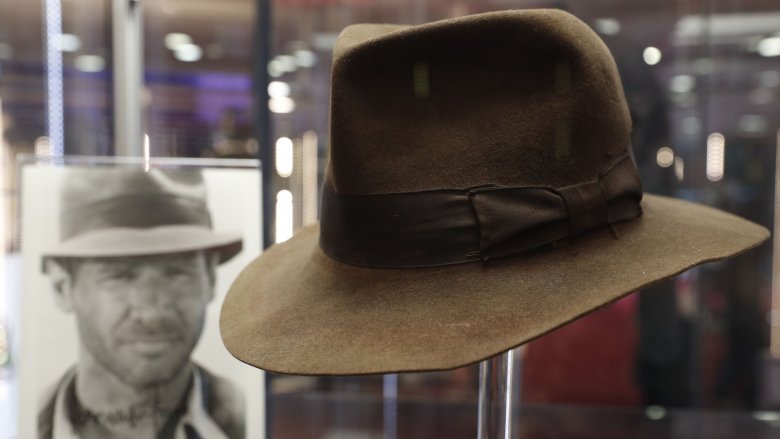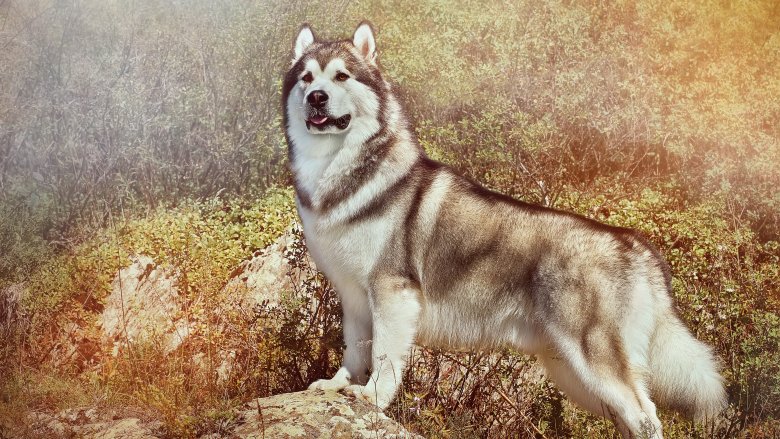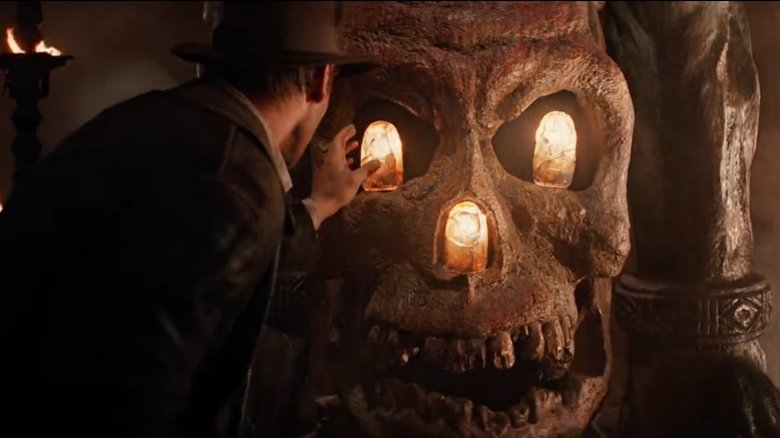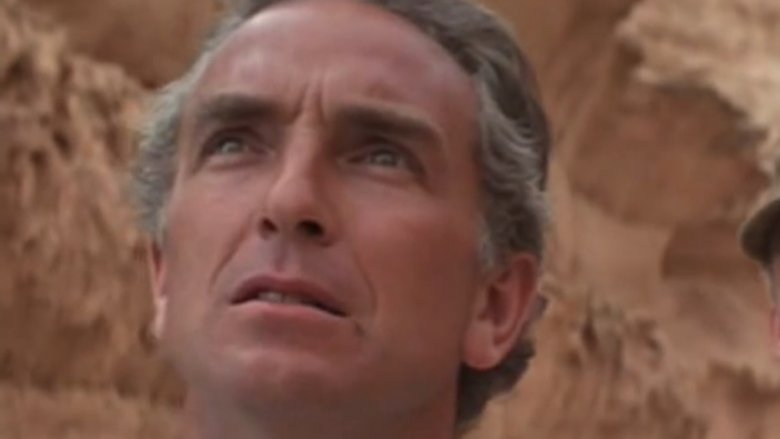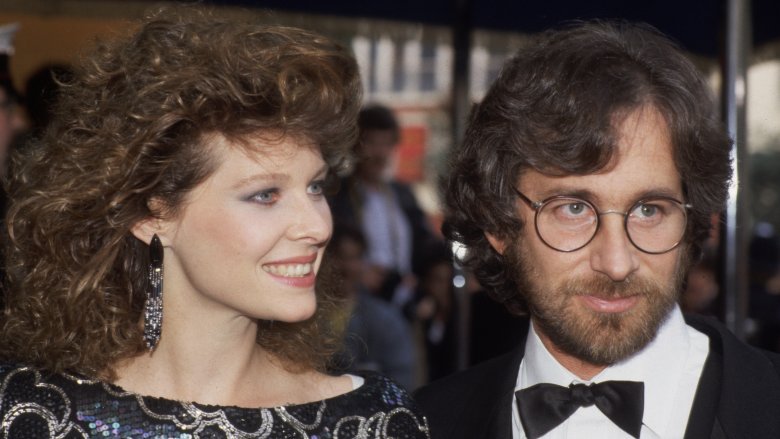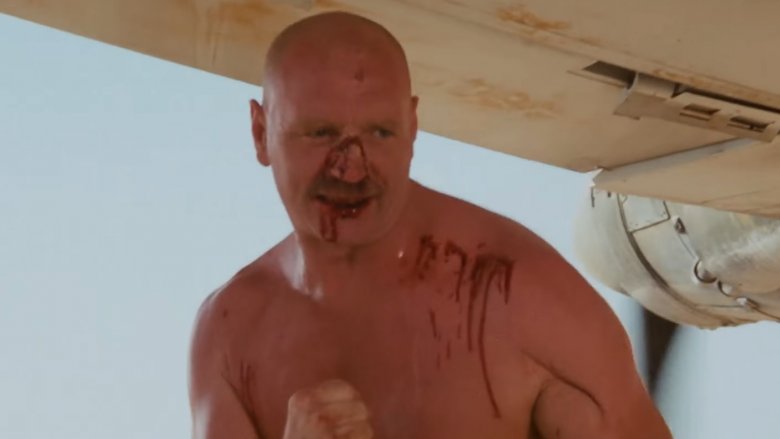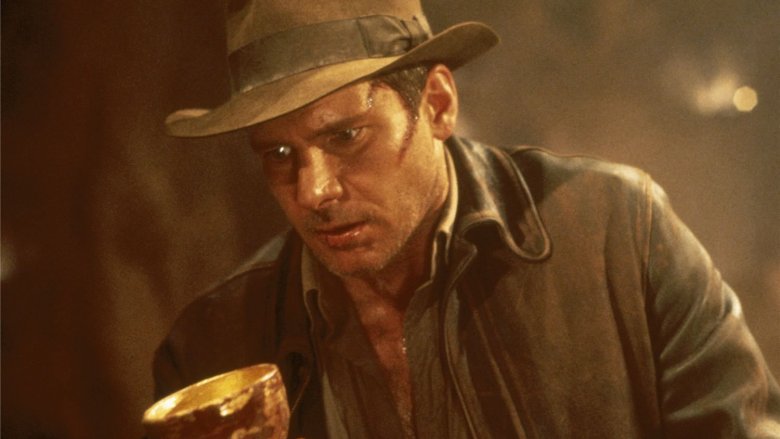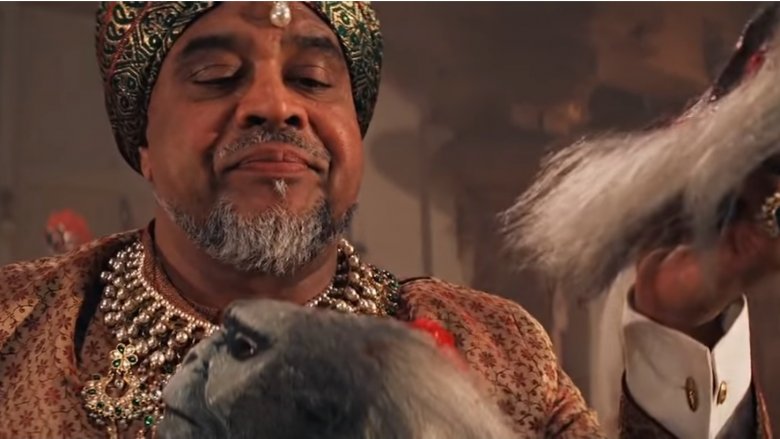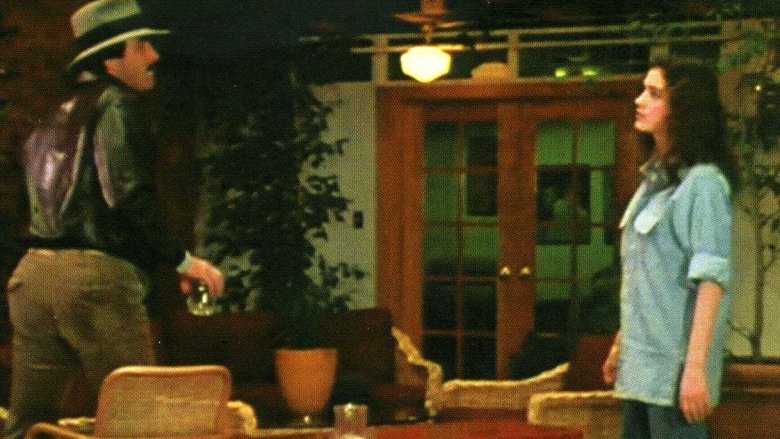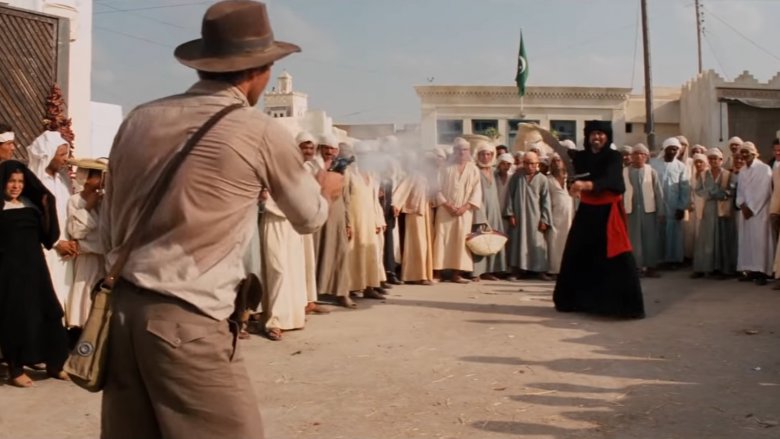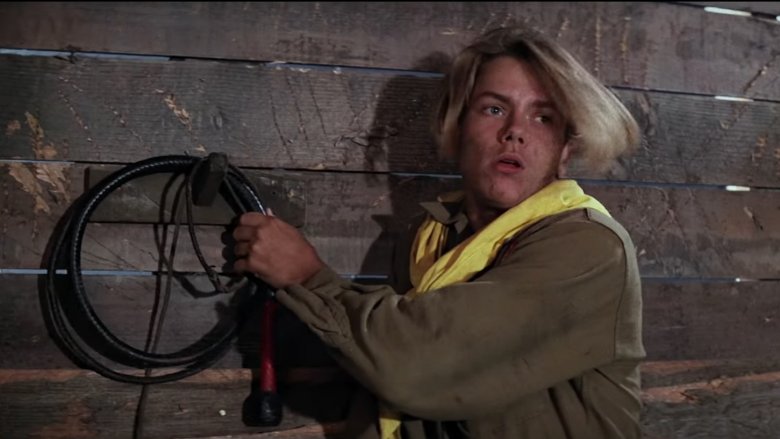False Indiana Jones Myths You've Always Believed
The Indiana Jones film franchise has amassed nearly $2 billion in worldwide box office — an impressive sum that doesn't even count all the revenue gained through video game and merchandise sales. With a film series this successful, most people would expect diehard fans to know every behind-the-scenes fact about the movies by heart. However, despite the widespread popularity of the Indiana Jones films, a number of fans and critics still feed into several fallacies about the character and franchise that have been floating around since the first film premiered in theaters. These myths range from small misconceptions to mythic Hollywood folklore, but no matter the scale of the misconception, we're here to wade through the mythos surrounding one of the most legendary franchises of all time — and debunk all of the erroneous claims and misunderstandings that critics and fans alike are still getting wrong. Here's a look at all the false things you've been believing about Indiana Jones.
What's in a name?
Toward the end of Indiana Jones and the Last Crusade, the audience learns that our hero nicknamed himself "Indiana" after his childhood dog. Although Indy's friend Sallah laughs heartily at this — and some audience members might assume it was all a joke — it actually offers some real insight into how the fictional character got his name. Apparently Indiana was the name of an Alaskan malamute that franchise mastermind George Lucas owned, and this is where the inspiration for the character's name originally came from. Oddly enough, the same Alaskan malamute's curly hair inspired another one of Lucas' most famous characters, the Star Wars Wookiee Chewbacca.
In The Young Indiana Jones Chronicles, the Jones family dog appears onscreen in several episodes. It turns out that the dog Professor Jones gained his namesake from also happens to be an Alaskan Malamute, and is portrayed throughout the television series as young Indy's best friend. In the young adult novel Young Indiana Jones and the Secret City, it's revealed that Indiana (the family dog) died saving Indy from a rattlesnake.
Temple of Doom was not as fictitious as you think
Although second installment Indiana Jones and the Temple of Doom has been heavily critiqued as outlandish, some of the major plot points were inspired by real Hindu beliefs. The most notable example is the Sankara Stones Jones is sent after, which are actually loosely based on the Shiva linga (or sivalinga), sacred symbols of the Hindu deity Shiva. Although George Lucas originally came up with the concept of the Sankara Stones, Temple of Doom screenwriters Gloria Katz and Williard Huyck were well versed in Indian mythology, and used that knowledge to draw parallels between the fictitious stone Lucas had created and Shiva lingas.
Another real-life inspiration that Temple of Doom drew upon was using Thuggees as the main antagonists. Although the ones seen in Temple of Doom are depicted as some type of supernatural sect, the Thuggees were a very real and dangerous cult of assassins that plagued India for centuries. Thuggees operated by befriending groups of travelers and gaining their trust before surprising them in the night. This is reminiscent of the cult that professor Jones encounters, as they first pretend to be peaceful and inviting. Another way the real Thuggees related to the fictional version of the cult in Temple of Doom was the fact that they practiced superstitious rituals and claimed to be helping Kali, the Hindu goddess of destruction and renewal, bring balance to the world through their vicious acts of robbery and murder.
No flies were eaten during the making of this picture
In Raiders of the Lost Ark, a scene featuring actor Paul Freeman playing the main antagonist, a rival French archaeologist named Rene Emile Belloq, gained attention and sparked controversy due to the way it was edited. In this particular scene, Jones is threatening to blow up the Ark of the Covenant with a rocket-propelled grenade from a rocky perch above. As Belloq shouts back up at him, a fly is seen landing on Freeman's jaw and crawling towards his mouth. As Belloq utters the line "You're going to give mercenaries a bad name" he appears to swallow a fly as it disappears.
After Raiders of the Lost Ark was released, rumors suggested that Freeman was so deep in character that he actually swallowed the fly. Although this misconception earned the actor accolades from critics such as Pauline Kael, Freeman later admitted that the fly actually flew away just as he finished his line. Apparently, Steven Spielberg specifically cut out the frames where the fly buzzed off so it appeared as though the villainous Belloq swallowed the fly without batting an eye.
A twisted timeline
Many fans have been confused about the timeline of the Indiana Jones films over the years, assuming they were released in the same order in which Jones' adventures transpired. That isn't the case, however: Temple of Doom came out after Raiders of the Lost Ark, but it was in fact written as a prequel.
Even though Temple of Doom was the second Indiana Jones film released in the series, the events of the story are actually set before Raiders of the Lost Ark. Many fans miss this detail, as it's hardly touched upon at all during the story. In fact, the only onscreen confirmation that Temple of Doom is a prequel appears during a title card flashed briefly at the beginning of the film, reading "Shanghai, 1935." Since Raiders of the Lost Ark was set in 1936, astute moviegoers realized that the Temple of Doom adventure occurred a full year before Jones started pursuing the Ark of the Covenant.
A familiar face
Some of the most memorable henchmen in the first three Indiana Jones adventures were actually played by the same person: actor/stuntman Pat Roach. A former professional wrestler, Roach kicked off his acting career with supporting roles in blockbuster films such as A Clockwork Orange and Clash of the Titans. After gaining some career momentum, Roach auditioned for the part of Darth Vader in Star Wars. Although he was turned down for the role, he caught George Lucas' eye and was subsequently cast as several of the burliest villains in the Indiana Jones franchise. In Raiders of the Lost Ark, Roach actually played two different characters — the first is a massive Sherpa that Indy fought in Marion's bar, and the second is probably Roach's most notable role, the giant German mechanic who gets shredded by a rotating Nazi plane propeller during his fight with Jones. In Temple of Doom, he played the chief slave driver who met his demise when his sash got caught and he was dragged into the rock crusher; in The Last Crusade, he played a Gestapo agent pursuing Jones and his father as they searched for the Holy Grail. Unfortunately, Roach wasn't available for the fourth film, as he passed away from throat cancer in 2004. Ford himself personally offered his condolences to his widow.
Temporary immortality
One of the most rampant misconceptions about the Indiana Jones film franchise remains the notion that Jones and his father achieved immortality after drinking from the Holy Grail in Indiana Jones and the Last Crusade. Theoretically, it might explain how Jones survived unlikely odds in Indiana Jones and the Kingdom of the Crystal Skull, such as the infamous scene when he hides from a nuclear blast by using a refrigerator as a shield. Although this hypothesis might help fans explain away a few plot holes, the theory just doesn't hold up when you consider the rules of the Holy Grail outlined during The Last Crusade.
Since the rules are very fleetingly mentioned and not exactly thoroughly explained, it's only natural that fans might be confused about what actually happened. Technically, Indy and his father do achieve immortality after drinking from the Grail, but it's very short-lived. As the Knight guarding the Grail briefly mentions, the Holy Grail's power of immortality only works as long as the user stays inside the temple, so when the Jones men pass over the seal on the way out of the temple, they lose their immortality. This is proven in the fourth film, when the audience learns that Henry Jones Sr. passed away during the long lapse between sequels.
A revolting clue
When Indy and his companions sit down for the Guardian of Tradition Dinner at Pankot Palace during Temple of Doom, they're offered a number of unappetizing dishes ranging from chilled monkey brains served in the primates' severed heads to a disturbing eyeball soup. Although the dinner scene is mostly remembered by fans as ridiculous and comical, as Jones and his friends grimace at the various repulsive dishes they're presented with, it actually does subtly let slip that something is amiss at the Palace. The lavish dinner was supposedly prepared by Hindus; however, Indy knows something is up after they serve snakes and monkey brains, because devout Hindus are strictly vegetarians and would never willingly eat meat. Although most fans get caught up in the gross humor and miss it, this scene was actually a substantial hint that the supernatural Thuggee cult had assumed control of the palace.
Indiana P.I.
Although the character of Indiana Jones is so heavily associated with Harrison Ford that it's difficult to imagine another actor playing him, Ford almost didn't get the part. George Lucas, who'd already worked with Ford in American Graffiti and the Star Wars films, originally didn't want him for Indiana Jones. In a behind the scenes feature about the making of the Indiana Jones films, Lucas explained his hesitation, saying that at the time he thought, "He's been in two of my movies. I don't want him to be my Bobby De Niro."
The filmmaker's first choice for Jones was actor Peter Coyote, who'd work with Lucas' Indiana partner Steven Spielberg when he played the good-natured government scientist in E.T., but the studio rejected Coyote because wasn't a big enough box office draw, so instead Lucas and Spielberg moved on to their next choice, Tom Selleck. Both filmmakers thought he was a perfect fit for the role, and even set up a screen test. Apparently the studio was actually ready to shoot with Selleck but, luckily for Ford, they were unable to get the actor out of his Magnum P.I. contract with CBS.
An unscripted battle
One of the most iconic scenes in the entire Indiana Jones franchise comes during Raiders of the Lost Ark, when Jones abruptly shoots a master swordsman twirling his weapon. Several different explanations for how this scene came to be have circled about the rumor mill, but the truth is that it was actually born out of terrible shooting conditions. The script originally called for a lengthy battle between Jones (wielding his whip) and a skilled swordsman, but multiple members of the crew suffered from food poisoning when they were filming the scene in Tunisia. Due to some pretty intense dysentery, along with the 100-degree heat on location, Ford was unable to shoot long enough to film the complicated fight sequence they'd planned, which could have take two or three days to film. Since Ford could barely stay out of his trailer for more than 10 minutes at a time, he suggested that he just shoot the swordsman instead, and the rest is history.
More than one Indy
Although Harrison Ford is undoubtedly the actor most associated with the character, many fans are mistaken in assuming that he's the only one who's played Indiana Jones; in fact, a handful of different actors have actually portrayed the character at different stages of his life. The most widely known actor to play Indy on the silver screen — besides Ford, of course — is River Phoenix. At the start of The Last Crusade, Phoenix plays a young Boy Scout version of Indy in a flashback scene depicting an early adventure.
In the television series The Young Indiana Jones Chronicles, Sean Patrick Flannery played a young adult Indiana, aged from 17-21 throughout the adventures Jones got caught up in during his childhood and youth. Although Flannery had top billing, two other actors portrayed the character at different ages during the series. George Hall appeared as an elderly Jones in bookend segments, and Corey Carrier played Indiana as a child (aged from 8-10).
